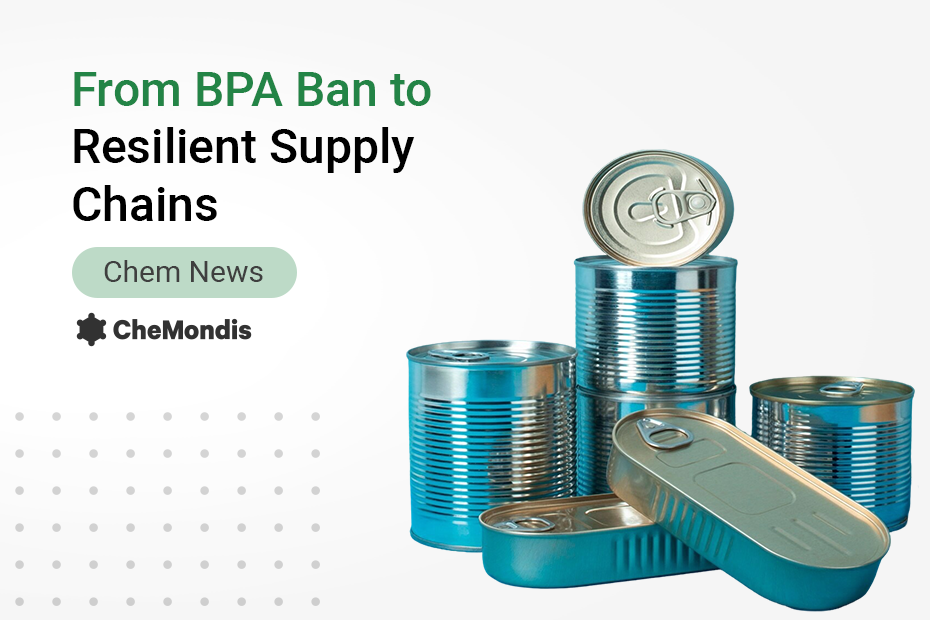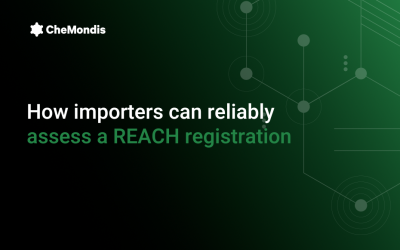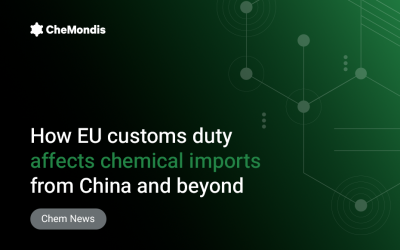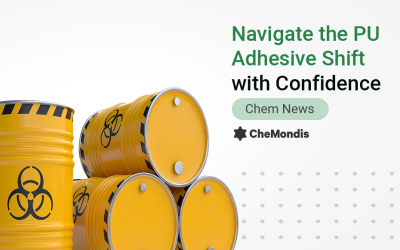Here’s How to Avoid Distruptions:
At CheMondis, we help procurement teams manage the EU BPA ban supply chain challenge by connecting them with verified suppliers of compliant alternatives. The transition away from BPA is complex, but you don’t have to navigate it alone. CheMondis provides the market intelligence and supplier access you need to de-risk your sourcing strategy
This is a complete and total ban, not a partial restriction. It covers everything from the coatings inside a food can to the printing ink on a bakery bag. Previous restrictions on BPA, such as the one for baby bottles, were narrow. This new ban is broad and all-encompassing, affecting plastics, coatings, resins, adhesives, and more.
Your key suppliers are being forced to change, and if you’re not proactive, you risk being caught off guard.
EU BPA Ban Supply Chain Pain Points for Procurement
You’ve relied on BPA for years because of its reliable performance. It’s durable, heat-resistant, and provides the barrier properties essential for food safety and shelf life. But now the EU BPA ban supply chain compliance process raises critical questions.
Supplier Risk: Are your current suppliers ready for this? Are their “BPA-free” claims legitimate, or are you buying non-compliant stock?
Cost & Scalability: Can compliant alternatives match the performance of BPA without skyrocketing costs? Are these new materials available at the scale you need?
Operational Disruption: How do you manage the transition? The clock is ticking on transitional periods, and once they expire, you need a new sourcing strategy, or your production lines could grind to a halt.
Pressure isn’t just coming from regulators; it’s also coming from your customers, who are demanding safer, “clean-label” products.
Why is This a Challenge in Supply Chain?
BPA has been a go-to material for decades because it’s:
- Durable and heat-resistant
- Excellent at forming protective barriers
- Critical to safety and extending shelf life
For business the important question becomes:
- Which materials can safely and legally replace BPA?
- Are the alternatives scalable and cost-effective?
- How do we transition production without disrupting supply?
While the regulation includes transitional periods to use up existing stocks, pressure from regulators, buyers, and consumers to switch BPA-free products is already here.
How to Secure Your Supply Chain After the EU BPA Ban
This ban is a catalyst for innovation and a chance to build a more resilient supply chain. The EU’s Safe and Sustainable by Design (SSbD) initiative is already pushing the market toward safer, high-performing alternatives. Forward-thinking companies are already sourcing:
Next generation coatings: BPA-free and PFAS-free solutions for food packaging
Innovative polymers: Bio-based, compostable, and recyclable materials
Compliant adhesives and inks: Products that meet stringent EU health and safety standards.
By taking immediate action, you not only guarantee compliance but also enhance your market positioning. You are not merely avoiding risks; you are constructing a supply chain that is resilient and prepared for the future.
Your Sourcing Partner
The EU’s BPA ban marks a turning point for food-contact materials — and for the entire food and packaging supply chain. Companies that act now to find and adopt safer, compliant alternatives will not only avoid last-minute disruption but also position themselves as leaders in sustainability and food safety.
CheMondis is here to help you stay ahead with the right materials, from the right suppliers, at the right time.
Instead of navigating fragmented supplier lists and unverified claims, CheMondis provides a centralized, transparent platform for chemical procurement. At CheMondis, we understand that replacing BPA in food-contact materials isn’t just about compliance — it’s about finding innovative, sustainable solutions without compromising on performance.




